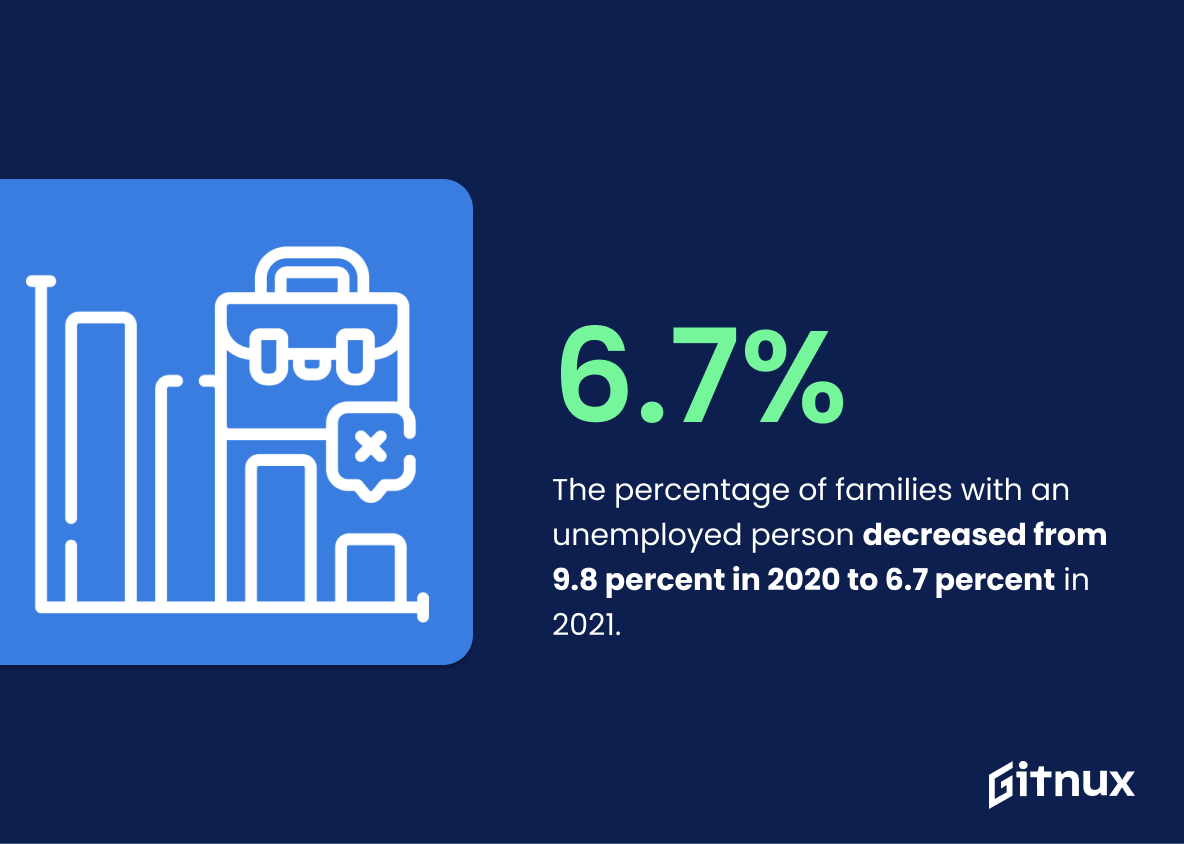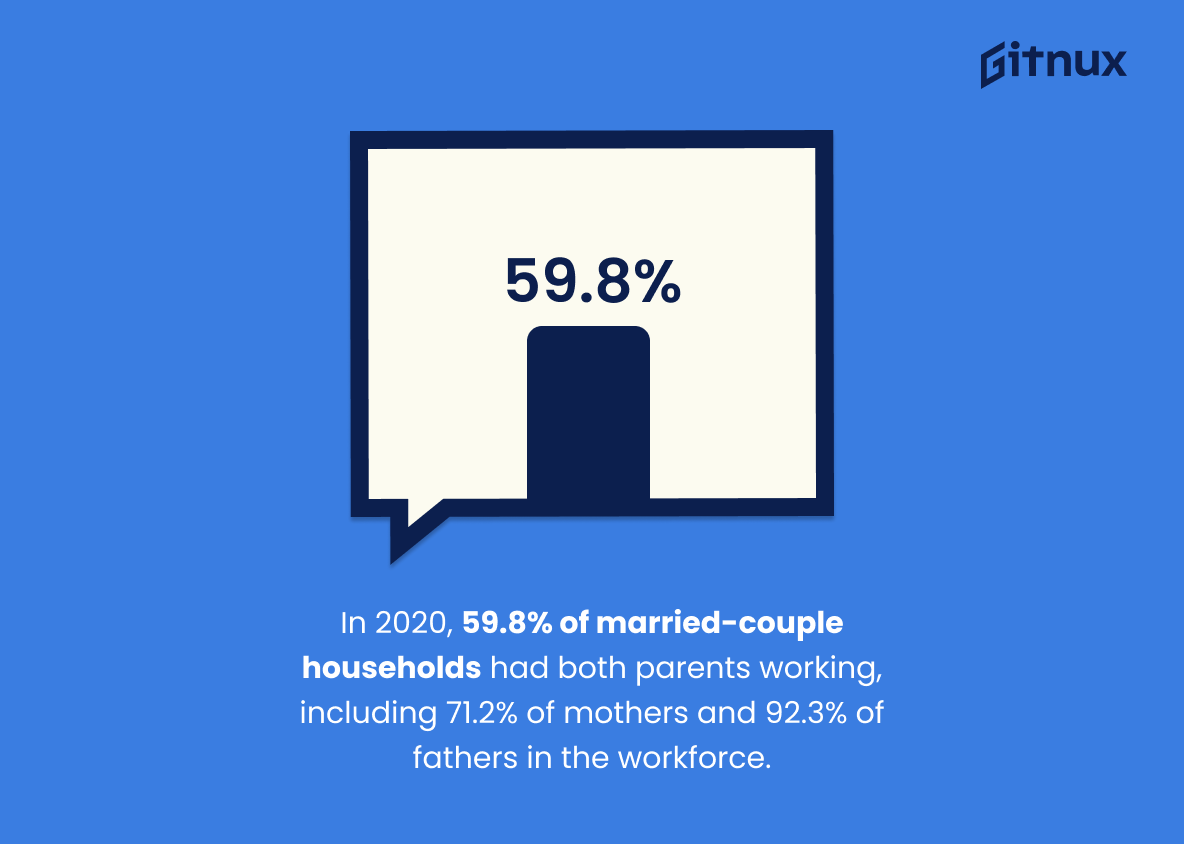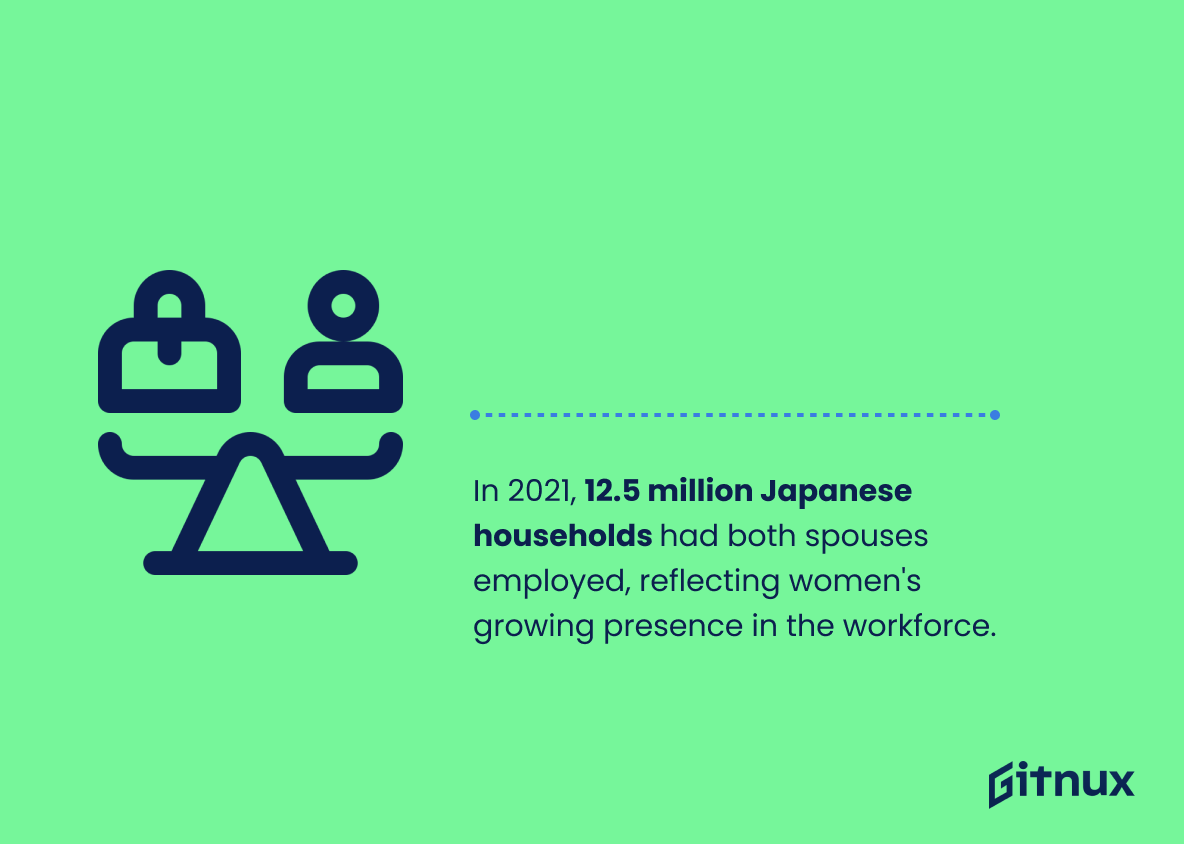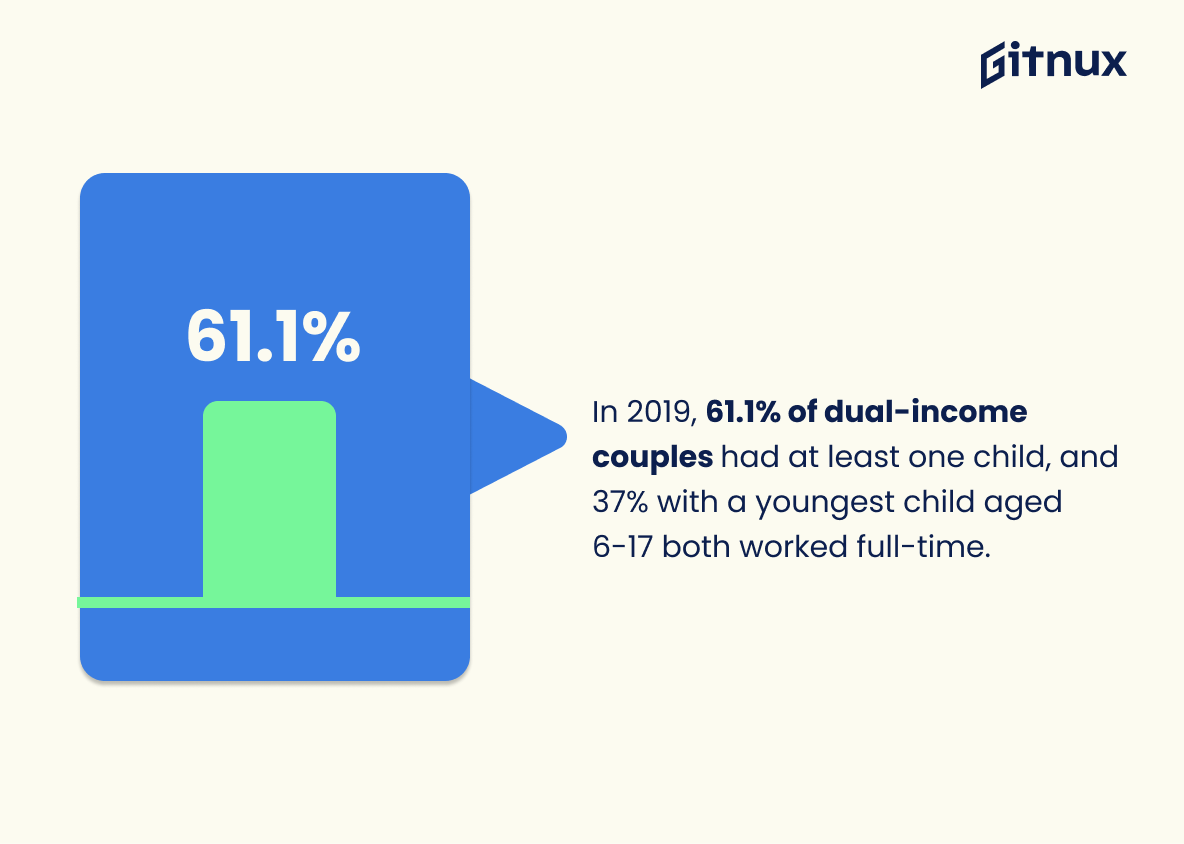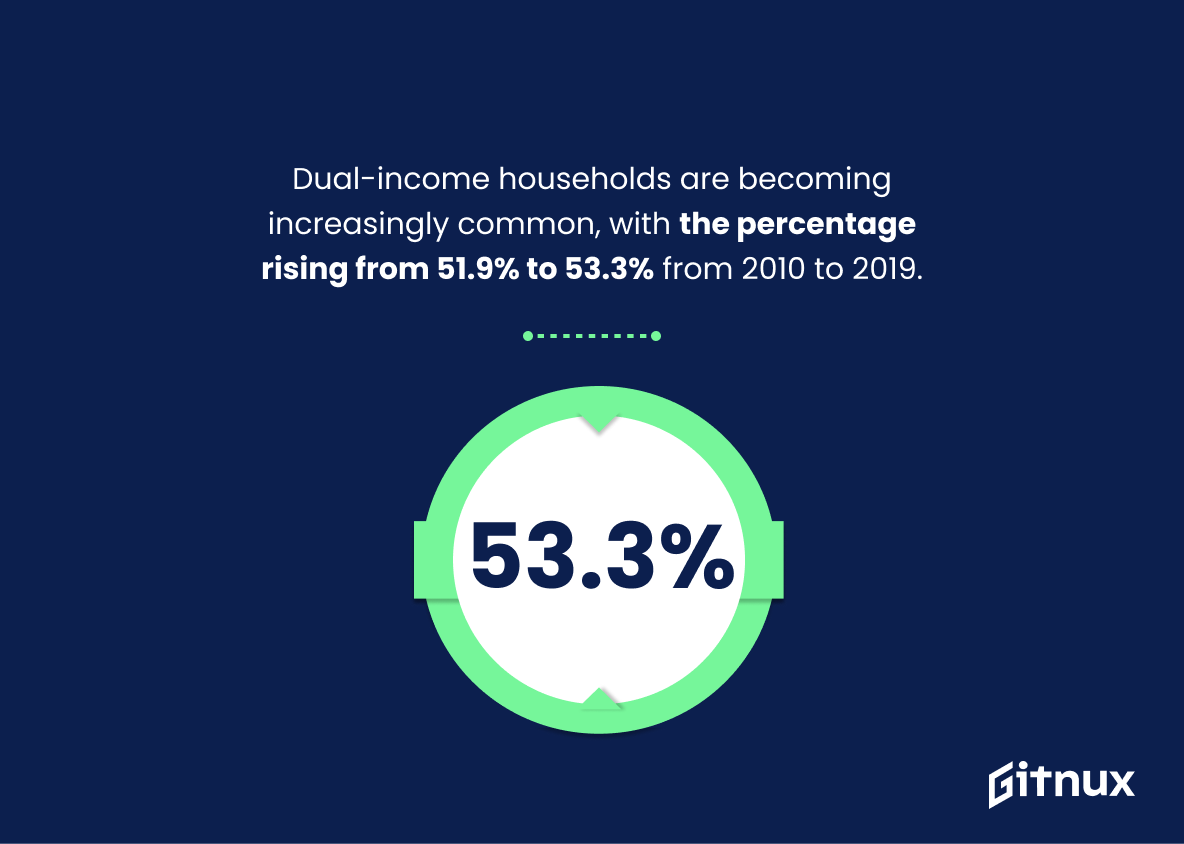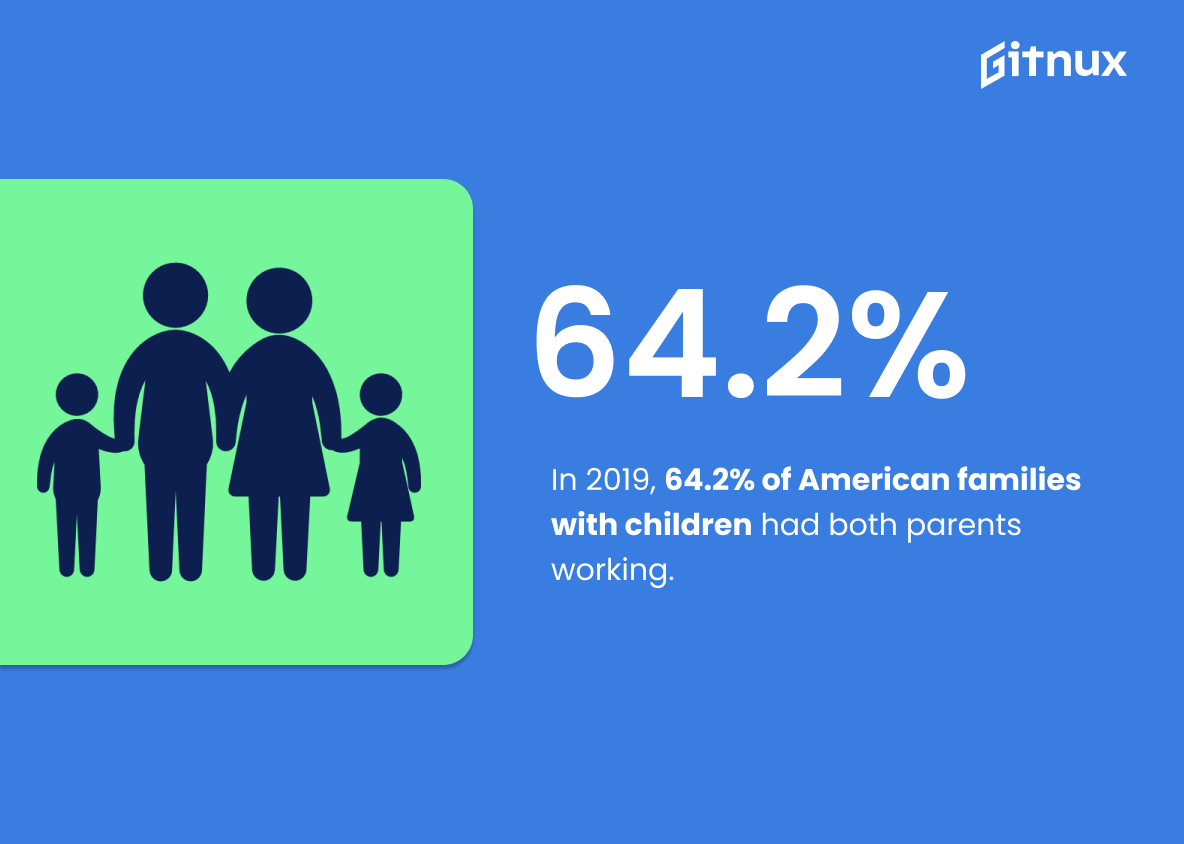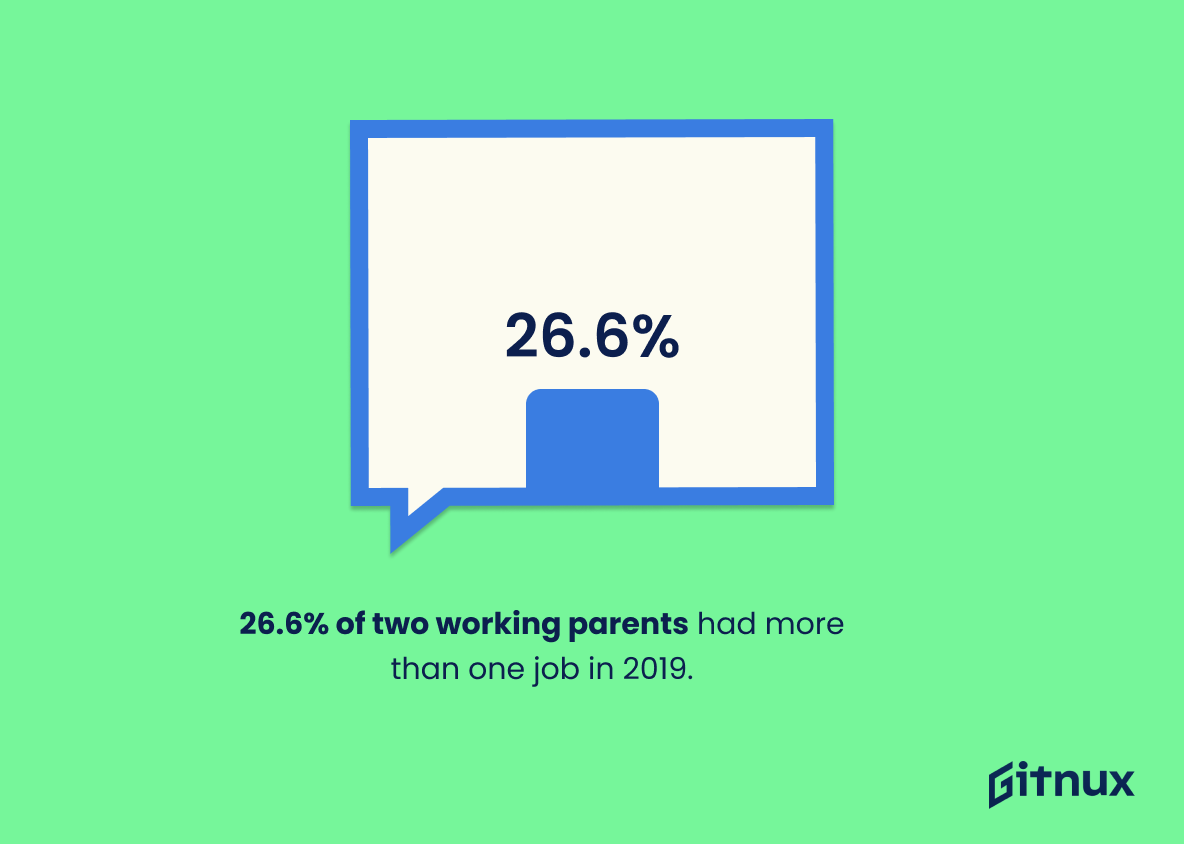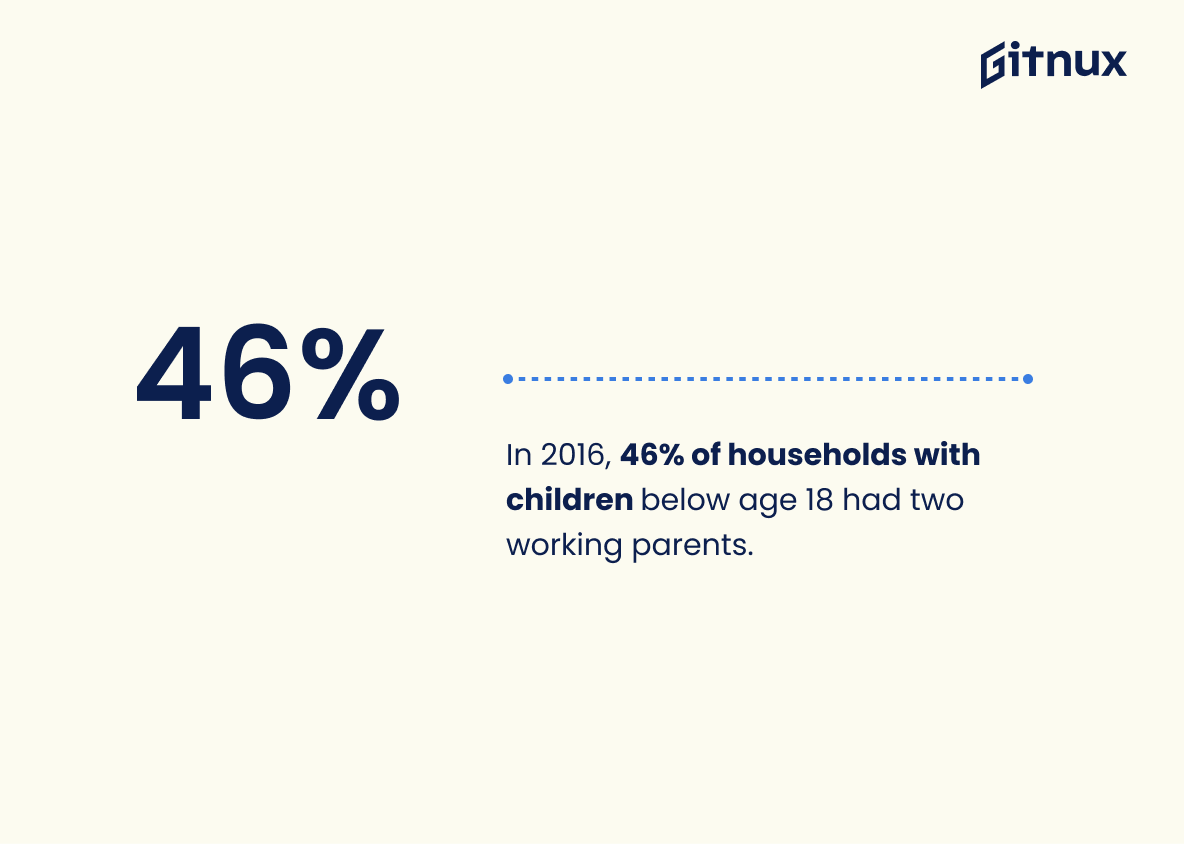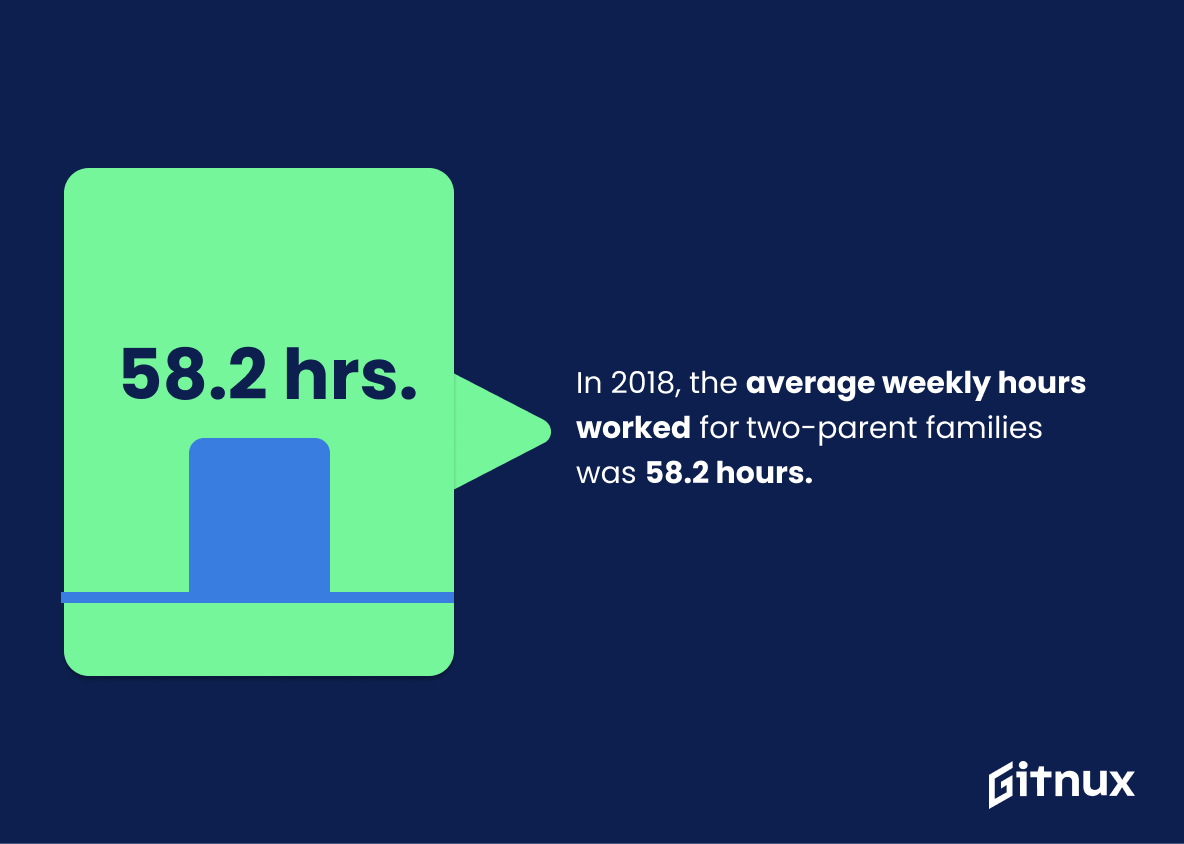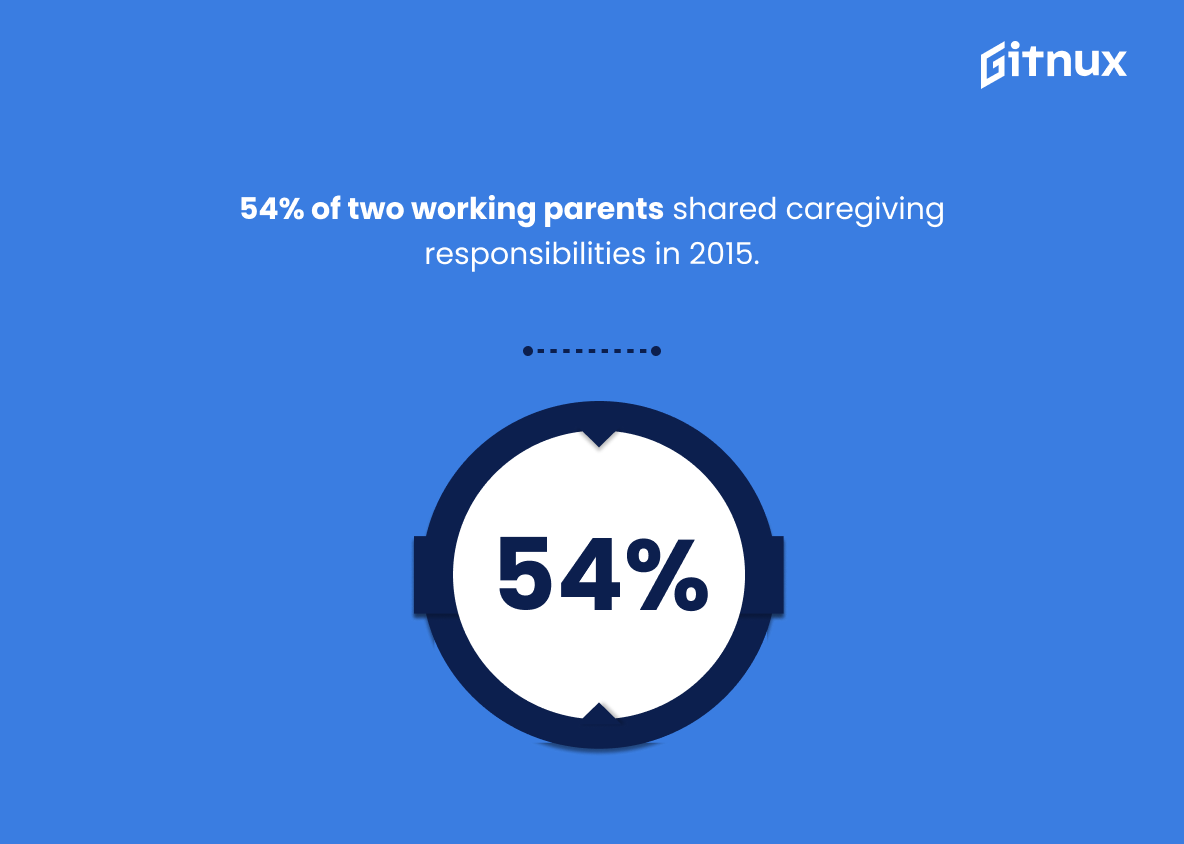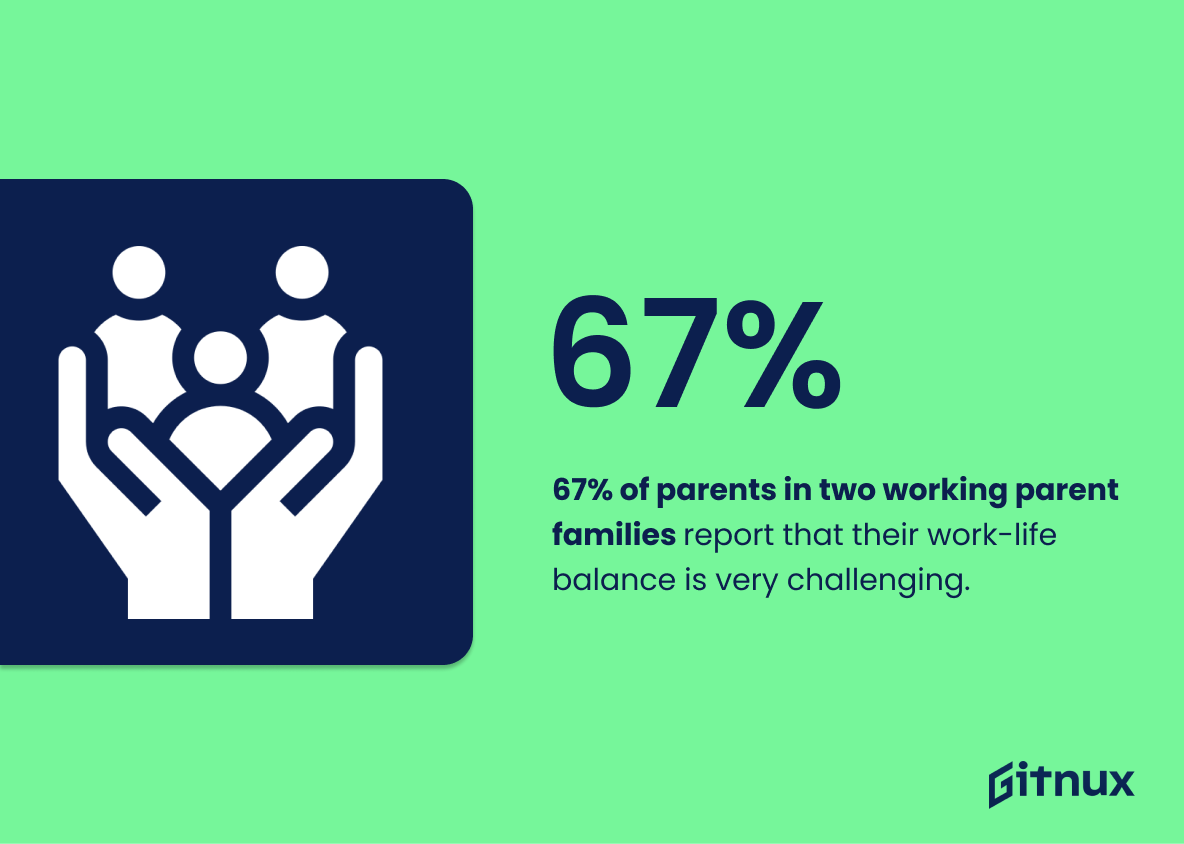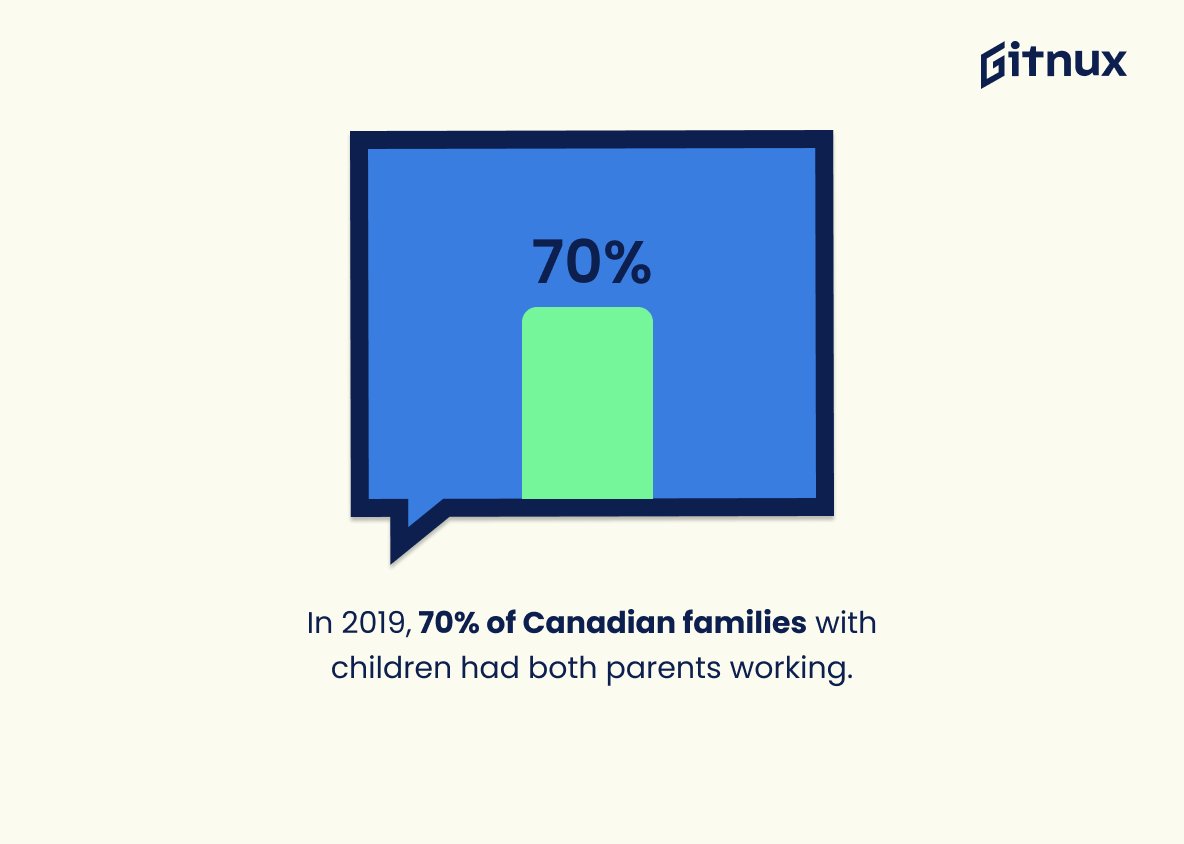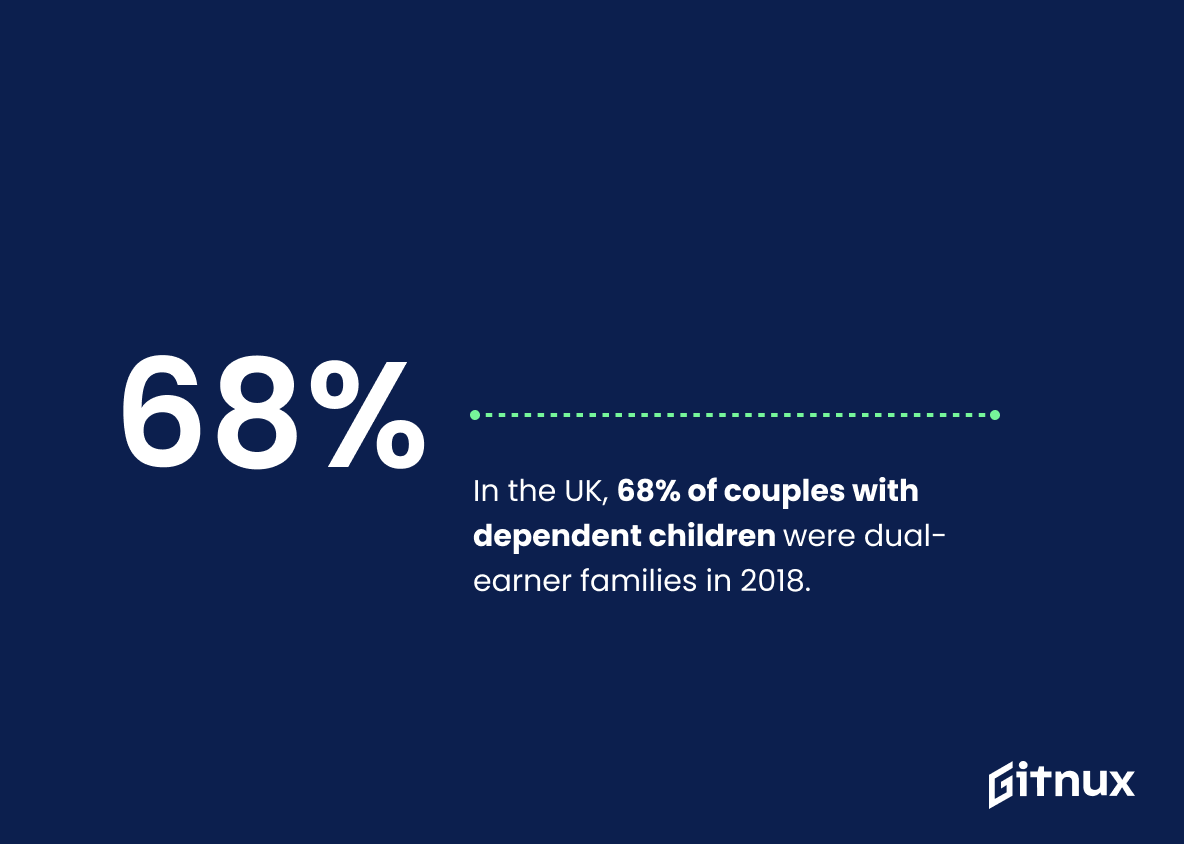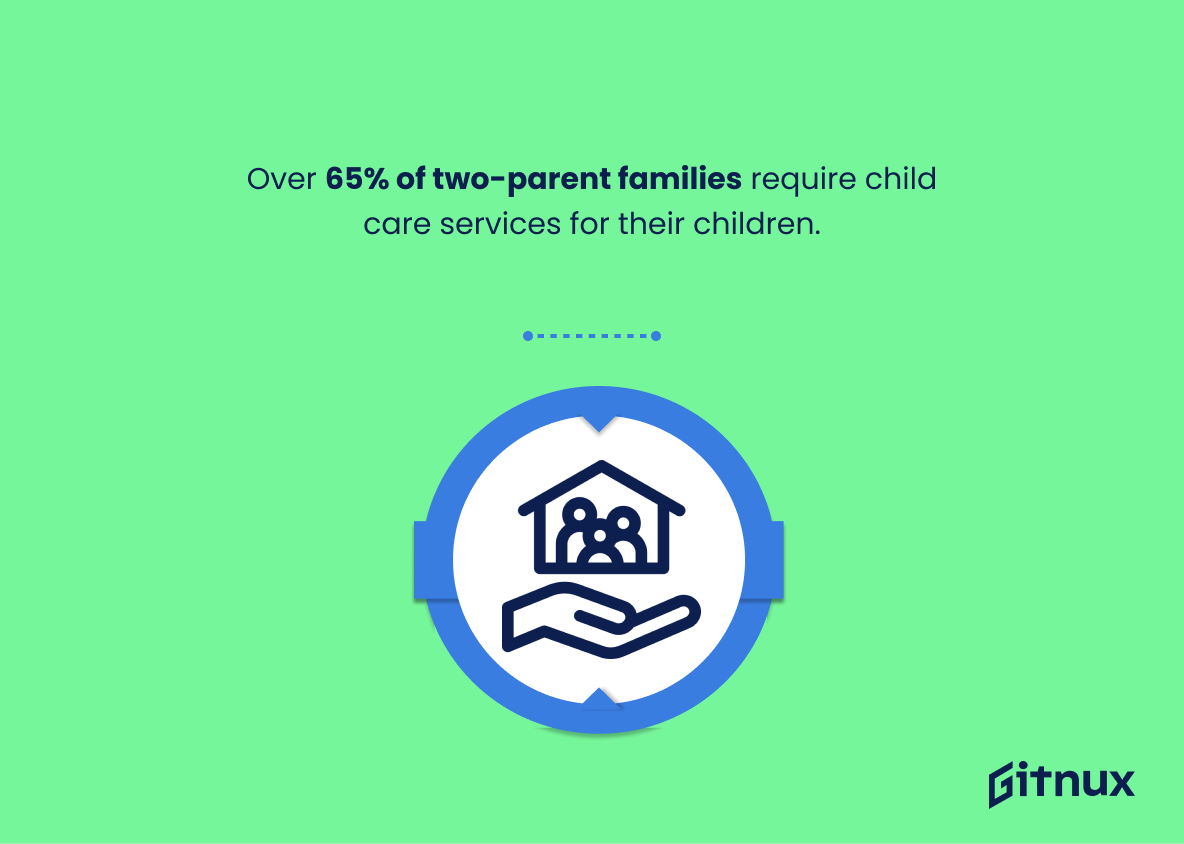As a society, we are constantly evolving and adapting to the changing times. One of the most significant changes in recent years has been the rise of two working parents households. This shift has had a profound impact on the way families operate and the way children are raised.
In this blog post, we will take a look at the statistics surrounding two working parents households and explore the implications of this trend. We will also discuss the challenges and benefits of having two working parents and how this affects the family dynamic. Finally, we will examine the impact of this trend on the economy and the workplace.
Two Working Parents: The Most Important Statistics
In 2019, 61.1% of dual-income couple families had at least one child and 37% of couples with a youngest child aged 6-17 both worked full-time.
Dual-income households are becoming increasingly common, with the percentage rising from 51.9% to 53.3% from 2010 to 2019.
Two Working Parents Statistics Overview
The percentage of families with an unemployed person decreased from 9.8 percent in 2020 to 6.7 percent in 2021.
More families are thus able to support themselves financially through employment, which is often a requirement for two working parents.
In 2020, 59.8% of married-couple households had both parents employed, with 71.2% of mothers and 92.3% of fathers in the labor force.
This shows the progress that has been made in terms of gender equality in the workplace. It also demonstrates that more women are entering the labor force and that the number of two-working parent households is increasing.
12.5 million households in Japan had both husband and wife employed in 2021, indicating an increasing participation of women in the labor market.
Dual-income households can lead to higher disposable incomes, which can be used to purchase more goods and services, thus stimulating economic growth. Additionally, it can also lead to increased financial security and stability for families, which can have a positive impact on their overall quality of life.
In 2019, 61.1% of dual-income couple families had at least one child and 37% of couples with a youngest child aged 6-17 both worked full-time.
The number of two-working parent households indicates that more parents are able to balance their work and family life, which can have a positive effect on the overall wellbeing of the family. Dual-income families allow parents to offset the financial sacrifices they have made in their education and professional development, such as the cost of a four-year degree and college debt.
The average cost of center-based infant and toddler day care in the US is $972 a month and a nanny is $580 a month, with 1 in 3 American families spending 20% of their annual household income on childcare and 1 in 5 families spending more than 25%.
This highlights the financial burden of childcare costs. This can make it on the other hand difficult for two working parents to balance their budget and make ends meet.
856,238 day cares in the US suggest that many families have two working parents, which has implications for the balance between professional and personal life, and the potential sacrifices that may need to be made in order to achieve success.
The majority of American households have had two incomes for at least the past 20 years, ranging from 52 to 58 percent. This decline was correlated with the Great Recession of 2007-09.
Dual-income households are becoming increasingly common, with the percentage rising from 51.9% to 53.3% from 2010 to 2019.
In Toledo, Ohio, 20.3% of households are dual income, while in Santa Ana, California, it is nearly 2.8 times more common.
Supplementary Statistics
In 2019, 64.2% of American families with children had both parents working.
More and more families are relying on two incomes to make ends meet, and that the traditional model of one parent staying at home to care for the children is becoming less common. This statistic is important to consider when discussing the challenges and benefits of having two working parents.
26.6% of two working parents had more than one job in 2019.
It suggests that many of them had to take on additional jobs in order to make ends meet, highlighting the need for more support for families with two working parents.
In 2016, 46% of households with children below age 18 had two working parents.
More and more families are relying on two working parents to make ends meet, and that the traditional model of one parent staying at home to care for the children is becoming less common. This statistic is important to consider when discussing the challenges and benefits of two working parents, as it provides a snapshot of the current state of affairs.
In 2018, the average weekly hours worked for two-parent families was 58.2 hours.
It speaks to the dedication and commitment of two-parent families to provide for their families and to ensure their children have the best opportunities. It also highlights the importance of having two working parents in order to make ends meet. This statistic is an important reminder of the hard work and dedication of two-parent families and the sacrifices they make to provide for their families.
54% of two working parents shared caregiving responsibilities in 2015.
Two working parents are increasingly taking on equal responsibility for caregiving, which is a positive step towards gender equality in the home. This statistic is also important in terms of understanding the impact of two working parents on the family unit, as it suggests that both parents are actively involved in the day-to-day care of their children. This statistic is a valuable insight into the changing nature of family life and the challenges faced by two working parents.
67% of parents in two working parent families report that their work-life balance is very challenging.
This highlights the immense pressure that these families are under to juggle their work and home lives, and the strain that this can put on their relationships and wellbeing. This statistic is a stark reminder of the need for employers to provide more flexible working options for parents, and for society to better support two working parent families.
In 2019, 70% of Canadian families with children had both parents working.
The traditional model of one parent staying at home to care for the children is no longer the norm. Instead, more and more families are relying on both parents to work in order to make ends meet. This statistic is important to consider when discussing the challenges and benefits of two working parents, as it provides a snapshot of the current reality for many Canadian families.
In the UK, 68% of couples with dependent children were dual-earner families in 2018.
Dual-earner families are becoming increasingly common, with two parents now often both working to support their children. This shift has implications for the way families are structured, the way they manage their finances, and the way they balance work and family life. It is an important statistic to consider when discussing the realities of two working parents.
66% of working parents say they feel rushed during their daily routine.
This highlights the need for employers to provide more flexible working arrangements and for society to better support working parents. It also serves as a call to action for parents to prioritize their own wellbeing and to make time for themselves amidst their busy schedules.
Over 65% of two-parent families require child care services for their children.
It speaks to the fact that, in many cases, both parents must work in order to make ends meet, and that the burden of providing care for their children falls on them. This statistic is a testament to the hard work and dedication of two-parent families, and the importance of having access to quality child care services.
Parental working hours can influence children’s mental health, with 8.8% of children experiencing emotional difficulties when living with two working parents.
This is a powerful reminder of the impact that parental working hours can have on children’s mental health. It foregrounds the fact that 8.8% of children experience emotional difficulties when living with two working parents, demonstrating the importance of striking a balance between work and family life.
In Australia, 58.9% of couples with children had both parents working in 2017.
More and more couples are choosing to have both parents work, which can have a positive impact on the family’s financial stability and overall quality of life. Additionally, it highlights the importance of workplace policies that support working parents, such as flexible hours and childcare options. This statistic is an important reminder that two working parents can be a successful and beneficial arrangement for many families.
In European countries, 66% of two-parent families have both parents working full-time.
The traditional model of one parent staying at home to care for the children is no longer the norm, and that both parents are now more likely to be working full-time. This has implications for the way families are structured, the way childcare is provided, and the way that work-life balance is managed. It is an important statistic to consider when discussing the realities of two-parent families in Europe.
In the U.S., 95% of families with children headed by parents with a college degree had at least one working parent in 2017.
Having a college degree can be a major factor in ensuring that both parents are able to work and provide for their family. It also shows that having a college degree can be a major factor in helping families achieve financial stability. This statistic is an important reminder of the importance of education and the value of having two working parents in a family.
Two-working-parent households are more likely to struggle with employment-related stress, with 62% reporting difficulty compared to 34% of single working parent households.
Despite the potential financial benefits of having two incomes, the stress of juggling two jobs can be overwhelming. This is an important point to consider when discussing the pros and cons of two-working-parent households, and it should be taken into account when making decisions about family dynamics.
The percentage of two working parent households in Korea was 46.9% in 2018.
More and more families are relying on two incomes to make ends meet, and that the traditional model of one parent staying at home to care for the children is becoming less common. This statistic is a testament to the hard work and dedication of Korean parents, and it is an important reminder of the importance of supporting two-working parent households.
Two working parent households have increased significantly since the 1970s when only about 30% of families had both parents working.
This speaks to the increasing prevalence of two working parent households, which has had a profound impact on the way families operate and the roles that parents play in their children’s lives. This shift has had a ripple effect on the economy, with more dual-income households contributing to the workforce and providing a greater financial stability for families. It also speaks to the changing gender roles in society, with more women entering the workforce and taking on more traditionally male roles. This statistic is a testament to the progress that has been made in the last few decades and serves as a reminder of the importance of continuing to strive for gender equality in the workplace.
Around 44% of two working parents report having less than 35 hours of family time per week.
With both parents working, it can be difficult to find the time to spend together as a family, leading to a decrease in the amount of time spent bonding and connecting with each other. This statistic highlights the importance of making time for family, even when both parents are working, in order to ensure that the family unit remains strong and connected.
In the U.S., 75% of employed mothers and 50% of employed fathers report flex-time, telecommuting or both as essential to managing work and family life.
Both mothers and fathers need to be able to balance their work and family life, and having access to flex-time and telecommuting options is essential for them to do so. This statistic is a powerful reminder that two working parents need to be supported in their efforts to juggle their responsibilities.
Conclusion
In conclusion, two working parent households are becoming increasingly common in the United States. This shift in family dynamics has had a positive effect on the economy and on the lives of many families.
While there are still challenges that come with having two working parents, the statistics show that two working parent households are becoming more successful and more common. This is a trend that is likely to continue in the future.
References
1 – https://www.bls.gov/news.release/pdf/famee.pdf
2 – https://www.catalyst.org/research/working-parents/
3 – https://www.statista.com/statistics/857228/japan-dual-income-households/
4 – https://www.catalyst.org/research/working-parents/
5 – https://www.researchgate.net/publication/340096347_Analysis_of_the_Pros_and_Cons_of_Dual-Income_Families
6 – https://www.tandfonline.com/doi/abs/10.1080/01926180390223978
7 – https://www.researchgate.net/publication/340096347_Analysis_of_the_Pros_and_Cons_of_Dual-Income_Families
8 – https://neededinthehome.com/what-can-you-gain-or-lose-in-a-dual-income-family/
9 – https://www.bls.gov/opub/mlr/2020/article/comparing-characteristics-and-selected-expenditures-of-dual-and-single-income-households-with-children.htm
10 – https://www.magnifymoney.com/news/dual-income-households-study/
11 – https://www.census.gov/
12 – https://www.koreatimes.co.kr
13 – https://www.researchgate.net
14 – https://www.census.gov
15 – https://www.ons.gov.uk
16 – https://www.bls.gov
17 – https://www.abs.gov.au
18 – https://nces.ed.gov
19 – https://www.eurofound.europa.eu
20 – https://www.pewsocialtrends.org
21 – https://www150.statcan.gc.ca
22 – https://www.cam.ac.uk
